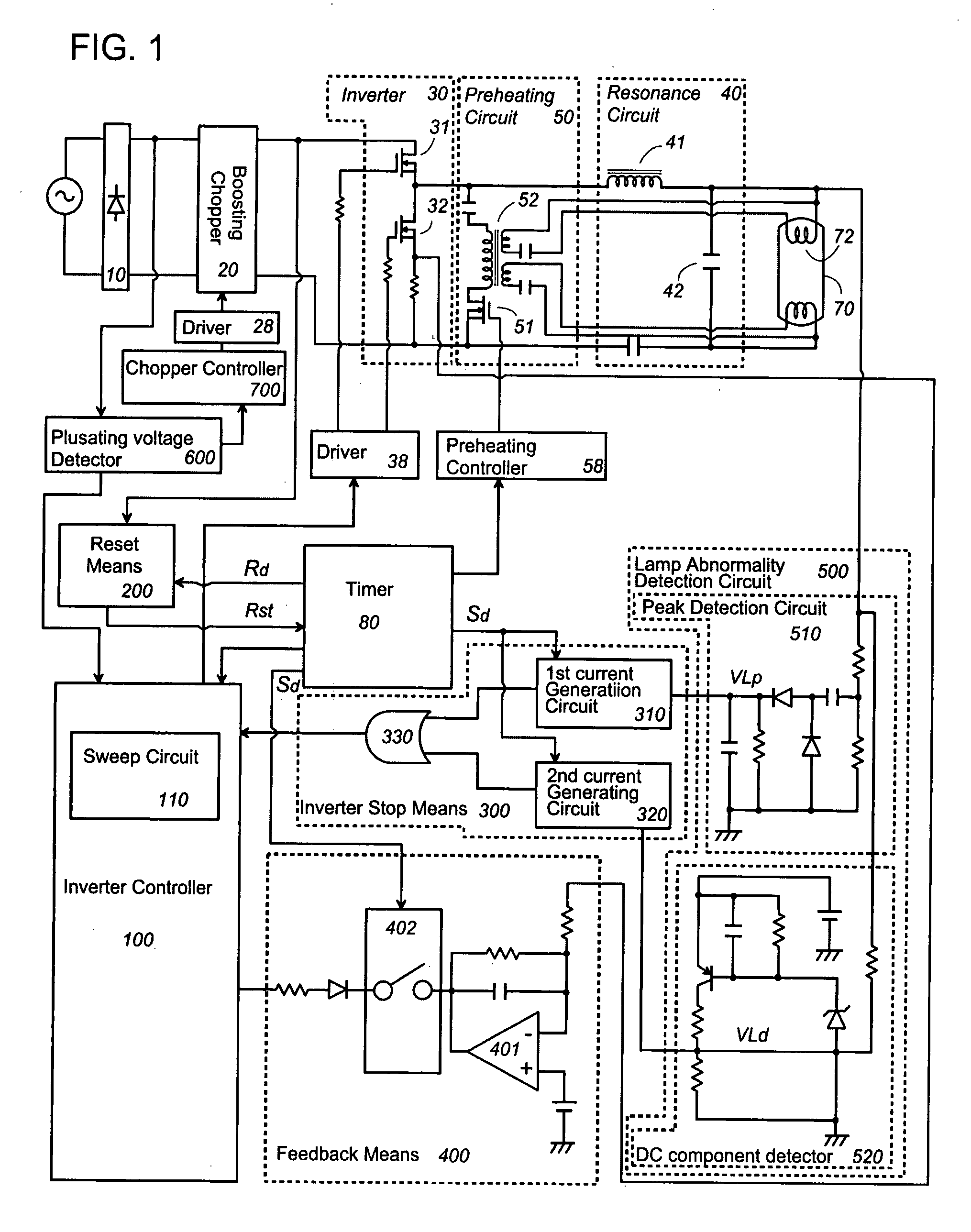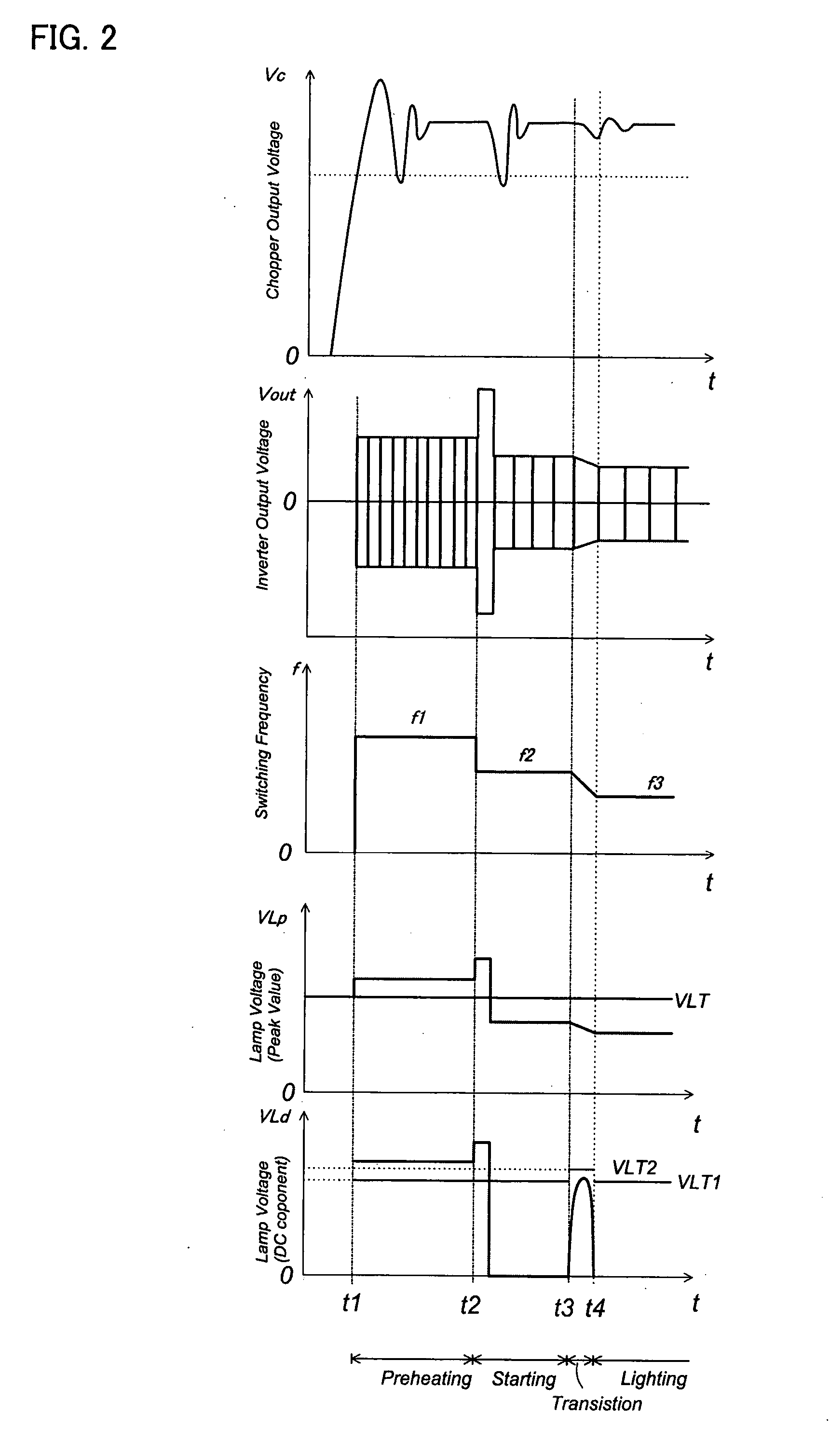Discharge Lamp Ballast Device and Lighting Appliance
a discharge lamp and ballast technology, applied in the direction of electric variable regulation, process and machine control, instruments, etc., can solve the problems of excessive load power, failure of the discharge lamp ballast device, and excessive stress on circuit components, so as to achieve stable lighting operation and free from undue stress
- Summary
- Abstract
- Description
- Claims
- Application Information
AI Technical Summary
Benefits of technology
Problems solved by technology
Method used
Image
Examples
first embodiment
[0035] FIGS. 1 to 5 illustrate a discharge lamp ballast device in accordance with a first embodiment of the present invention. The discharge lamp ballast device is incorporated in an appliance mounting a discharge lamp, and includes a rectifier 10 rectifying an AC voltage from an AC power source, a chopper 20 receiving a pulsating DC voltage from the rectifier 10 to generate a boosted DC voltage, an inverter 30 converting the boosted DC voltage into a high frequency AC voltage, and a resonance circuit 40 resonating the high frequency AC voltage so that the resonating voltage from the resonant circuit is applied to the discharge lamp 70 for lighting the same. Further, the discharge lamp ballast device is equipped with a preheating circuit 50 which supplies a preheating current to filaments of the discharge lamp 70.
[0036] The chopper 20 includes a switching element which is turned on and off in accordance with a control signal from a chopper controller 700 to boost the pulsating DC v...
second embodiment
[0070]FIG. 12 illustrates a discharge lamp ballast device in accordance with a second embodiment of the present invention. The discharge lamp ballast device is basically identical in configurations and functions to the first embodiment, but includes a pulsating voltage detection circuit 600 which stops the inverter 30 and the chopper 20 when a pulsating DC voltage Vp from the rectifier 10 to the chopper goes below a predetermined value. The like parts are designated by like reference numerals, and no duplication explanation is made herein.
[0071] The rectifier 10 provides the pulsating DC voltage to the chopper 20 through a filtering capacitor 11. The chopper 20 includes a switching element 24 connected in series with an inductor 21 across the output ends of the rectifier 10, and a smoothing capacitor 26 connected in series with a diode 25 across the switching element 24. The switching element 24 is controlled by the chopper controller 700 to turn on and off, accumulating a smoothed...
PUM
 Login to View More
Login to View More Abstract
Description
Claims
Application Information
 Login to View More
Login to View More - R&D
- Intellectual Property
- Life Sciences
- Materials
- Tech Scout
- Unparalleled Data Quality
- Higher Quality Content
- 60% Fewer Hallucinations
Browse by: Latest US Patents, China's latest patents, Technical Efficacy Thesaurus, Application Domain, Technology Topic, Popular Technical Reports.
© 2025 PatSnap. All rights reserved.Legal|Privacy policy|Modern Slavery Act Transparency Statement|Sitemap|About US| Contact US: help@patsnap.com



